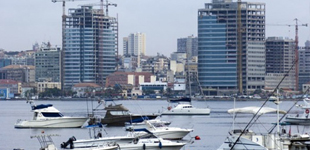This ALSO is Africa The Africa They Dont Show You On TV
Luanda, Angola
Angola
 It is divided into 18 provinces, and its capital city is Luanda. The main maritime ports are in Luanda, Lobito, and Namibe.
It is divided into 18 provinces, and its capital city is Luanda. The main maritime ports are in Luanda, Lobito, and Namibe.
The estimated number of inhabitants in 2004 was 11 million, with an estimated growth to 16 million by the year 2010.
It was also estimated in 1995 that the population was distributed as follows: 49,3% (males) 50,7% (females). Out of that, 32% lived in urban areas and 53% being economically active.
Luanda alone has an estimated (1995) population of 3 million people.
Angola’s official language is Portuguese, but the country counts with various dialects such as Kikongo, Kimbundo, Umbundu, Chokwe, Mbunda and Oxikwanyama.
The population is predominantly Christian; with the Catholic religion being the most expanded one.
It has a tropical climate with two seasons: semi-arid from May to September and hot and rainy from September to May.
The terrain is a narrow coastal plain, which rises abruptly to a vast interior plateau
The natural resources are oil, diamonds, iron ore, phosphates, copper, feldspar, gold, bauxite, and uranium. The land has excellent conditions for plantation and pastures. It also has a vast area of forests and woodland providing wood and other materials.